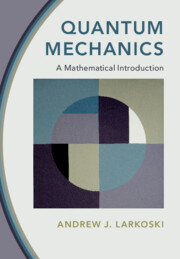Refine search
Actions for selected content:
36762 results in Cambridge Textbooks
Chapter 6 - Renewable Energy Resources
-
- Book:
- Sustainable Energy
- Published online:
- 17 February 2023
- Print publication:
- 19 January 2023, pp 124-140
-
- Chapter
- Export citation
Copyright page
-
- Book:
- Sustainable Energy
- Published online:
- 17 February 2023
- Print publication:
- 19 January 2023, pp iv-iv
-
- Chapter
- Export citation
Preface
-
- Book:
- Sustainable Energy
- Published online:
- 17 February 2023
- Print publication:
- 19 January 2023, pp xiii-xv
-
- Chapter
- Export citation
Chapter 15 - Future Prospects
-
- Book:
- Sustainable Energy
- Published online:
- 17 February 2023
- Print publication:
- 19 January 2023, pp 390-399
-
- Chapter
- Export citation
Chapter 2 - The Concept of Sustainability
-
- Book:
- Sustainable Energy
- Published online:
- 17 February 2023
- Print publication:
- 19 January 2023, pp 16-32
-
- Chapter
- Export citation
Chapter 13 - Energy Storage
-
- Book:
- Sustainable Energy
- Published online:
- 17 February 2023
- Print publication:
- 19 January 2023, pp 317-354
-
- Chapter
- Export citation
Chapter 10 - Ocean Energy
-
- Book:
- Sustainable Energy
- Published online:
- 17 February 2023
- Print publication:
- 19 January 2023, pp 213-250
-
- Chapter
- Export citation
Index
-
- Book:
- Sustainable Energy
- Published online:
- 17 February 2023
- Print publication:
- 19 January 2023, pp 422-426
-
- Chapter
- Export citation
Chapter 12 - Wind Energy
-
- Book:
- Sustainable Energy
- Published online:
- 17 February 2023
- Print publication:
- 19 January 2023, pp 299-316
-
- Chapter
- Export citation
Appendix D - Abbreviations
-
- Book:
- Sustainable Energy
- Published online:
- 17 February 2023
- Print publication:
- 19 January 2023, pp 419-421
-
- Chapter
- Export citation
Acknowledgements
-
- Book:
- Sustainable Energy
- Published online:
- 17 February 2023
- Print publication:
- 19 January 2023, pp xvi-xvi
-
- Chapter
- Export citation

Quantum Mechanics
- A Mathematical Introduction
-
- Published online:
- 14 January 2023
- Print publication:
- 15 December 2022
-
- Textbook
- Export citation
7 - Compensation for personal injury and death
- from Part 2 - Compensation in specific contexts
-
- Book:
- Remedies Cases and Materials in Australian Private Law
- Published online:
- 01 February 2023
- Print publication:
- 13 January 2023, pp 254-296
-
- Chapter
- Export citation
9 - Equitable compensation for equitable wrongs
- from Part 2 - Compensation in specific contexts
-
- Book:
- Remedies Cases and Materials in Australian Private Law
- Published online:
- 01 February 2023
- Print publication:
- 13 January 2023, pp 320-354
-
- Chapter
- Export citation
Part 5 - Account of profits and other gain-based relief for wrongs
-
- Book:
- Remedies Cases and Materials in Australian Private Law
- Published online:
- 01 February 2023
- Print publication:
- 13 January 2023, pp 531-584
-
- Chapter
- Export citation
19 - Proprietary remedies
- from Part 7 - Proprietary remedies
-
- Book:
- Remedies Cases and Materials in Australian Private Law
- Published online:
- 01 February 2023
- Print publication:
- 13 January 2023, pp 642-664
-
- Chapter
- Export citation
12 - ‘Equitable damages’ or Lord Cairns’ Act damages
- from Part 3 - Remedies compelling performance and related remedies
-
- Book:
- Remedies Cases and Materials in Australian Private Law
- Published online:
- 01 February 2023
- Print publication:
- 13 January 2023, pp 427-452
-
- Chapter
- Export citation
Table of cases
-
- Book:
- Remedies Cases and Materials in Australian Private Law
- Published online:
- 01 February 2023
- Print publication:
- 13 January 2023, pp xxviii-xxxix
-
- Chapter
- Export citation
Index
-
- Book:
- Remedies Cases and Materials in Australian Private Law
- Published online:
- 01 February 2023
- Print publication:
- 13 January 2023, pp 694-702
-
- Chapter
- Export citation
Part 7 - Proprietary remedies
-
- Book:
- Remedies Cases and Materials in Australian Private Law
- Published online:
- 01 February 2023
- Print publication:
- 13 January 2023, pp 641-664
-
- Chapter
- Export citation
